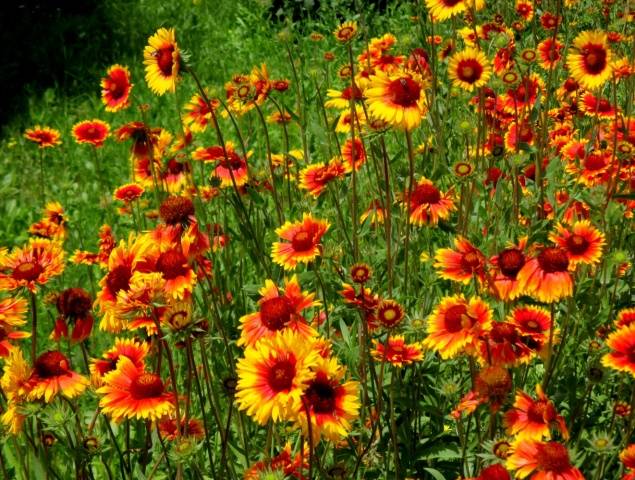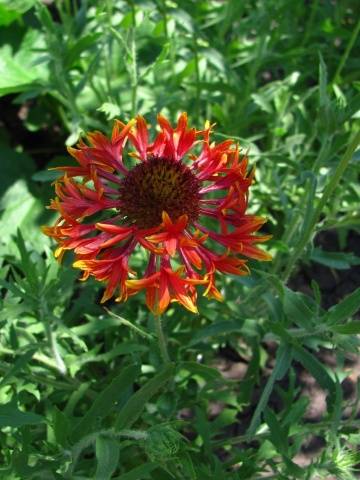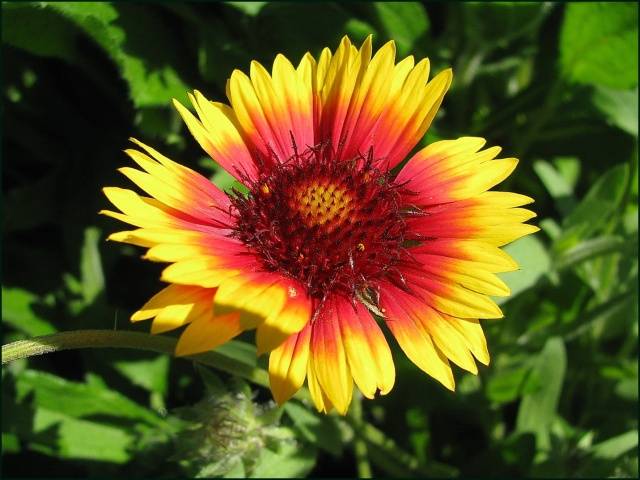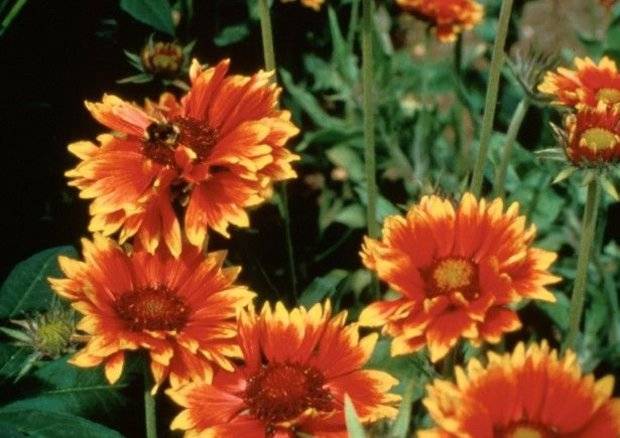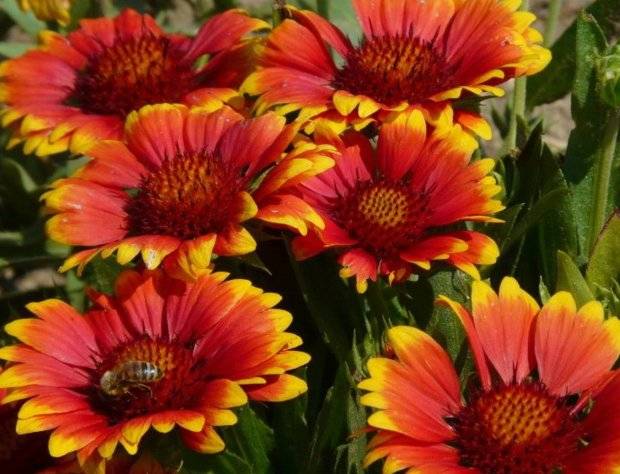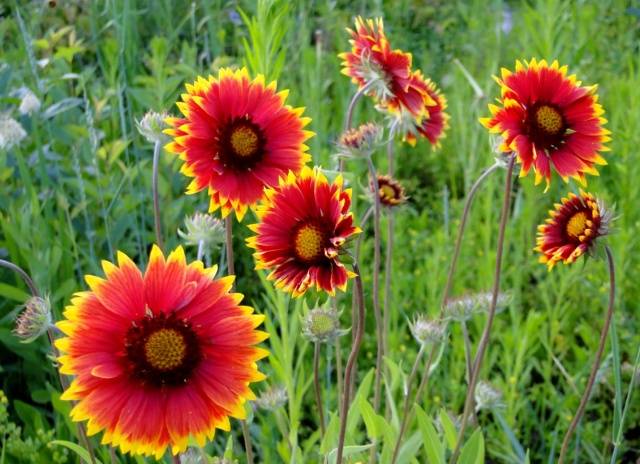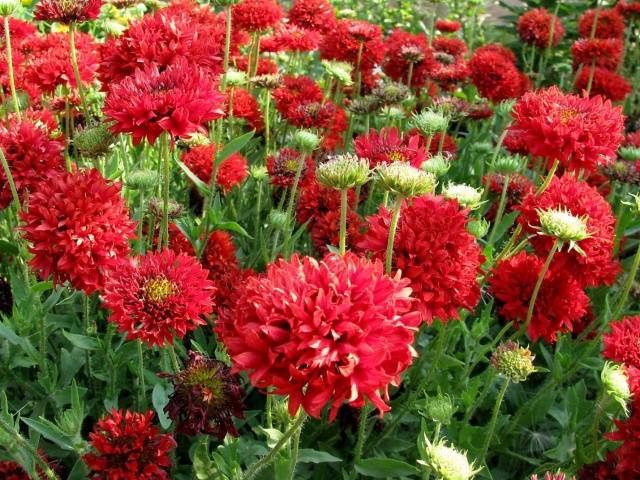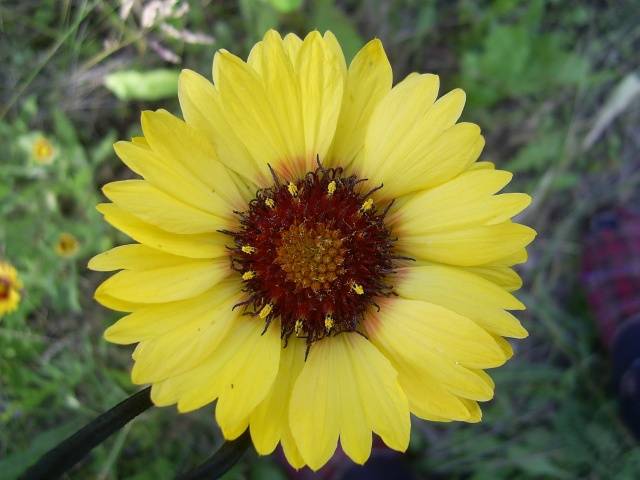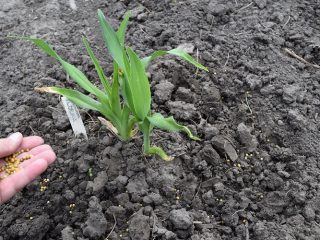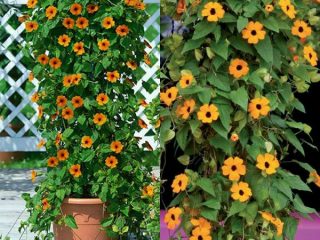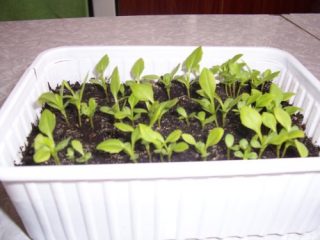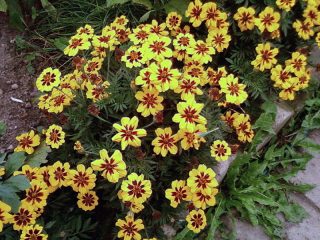Content
Bright Gaillardia illuminates any flower garden and pleases the eye. The colorful plant is hardy, blooms for a long time, and is resistant to drought and frost. From almost 30 types of flowers, you can choose perennial or annual Gaillardia, which are propagated by growing from seeds at home.
Description and characteristics
Gaillardia belongs to the Astrov family. Her homeland is the dry prairies of North America. Gaillardia of different varieties are from 20 to 90 cm high. Small compact bushes do not fall apart, they look neat. Growing tall involves the installation of supports and a garter. A dense or spreading bush forms dense shoots with branches, they are straight, pubescent, a little harsh to the touch. Lower basal leaves with petioles. Sessile leaves on the stems are elongated, serrated at the edges, pointed, growing alternately.
Inflorescence structure
Flexible, thin and long, but strong peduncles bear one inflorescence - a basket. Flowers are simple, double or semi-double, odorless. The marginal flowers are three-toothed, of all kinds of red and yellow shades and their combinations, which evenly change along the radius, forming a picturesque pattern. In the center are tubular flowers of darker, almost brown tones. Semi-double inflorescences are formed from several rows of reed flowers. Terry flowers form densely arranged funnel-shaped tubular flowers. The diameter of the inflorescences is from 6 to 12 cm.
Flowering begins in June and lasts until autumn. Gaillardia, which is cultivated from seed, creates harmonious ensembles with plantings of other drought tolerant flowers like gypsophila or kermek. This flower even tolerates the harsh Siberian climate.
Types and varieties
They prefer the cultivation of all varieties of annual and perennial Gaillardia by sowing seedlings.
Gaillardia is beautiful
Bushes of flowers of different heights depending on the variety. Inflorescences are 6-7 cm in size. The edge of the petals is yellow, reddish towards the center. This is the most famous annual Gaillardia, which is spread by growing seedlings.
- Lorenza - spherical yellow-crimson inflorescences;
- Red Plume - terracotta scale;
- Yellow Plume - yellow baskets;
- Picta - terry inflorescences of a juicy pomegranate color.
Gaillardia large-flowered spinous
Perennial tall, up to 1 m, plant with huge 10-12 cm inflorescences of yellow-red or yellow color. It is advisable to propagate by cultivation through seedlings.
- Mandarin - bright orange-red inflorescences;
- Croftwave Yellow - dazzling yellow;
- Dazzer - the tips of the petals of a delicate sandy shade, the rest of the surface is bright red;
- Wirral flame - ruby center of petals and orange edges.
Gaillardia hybrid
The result of crossing beautiful and spinous Gaillardia. Many varieties of tall, with a typical range of tones of terry baskets, bloom for two months. A guaranteed shade will give the annual planting of seeds for seedlings:
- Arizona Sun - the lowest, 20-centimeter bush, yellow-red flowers;
- Primavera is a compact bush up to 25 cm;
- Kobold - peduncle up to 40 cm, the edges of the petals are red, the central flowers are of a purple-yellow hue;
- Golden Goblin - medium height, with a golden range;
- Burgundy - 55 cm, dark ruby flower;
- Bremen - up to 70 cm, crimson edges, ruby-tone petals;
- Zone - golden flower, height up to 70 cm;
- Tokajer is a tall plant, 75 cm, bright orange flowers.
There are still picturesque plantings of blunt-toothed Gaillardia with light cream flowers and lanceolate with red or yellow inflorescences.
Complex fertilizer for flowers is applied at 25 g per 1 square meter.
Breeding features
Gaillardia can spread by self-seeding, but then the characteristic shades of the flower are lost. If you like a certain variety, you need to choose the largest beautiful flower among the planting and mark it for collecting seeds. Growing through seedlings will give you the opportunity to admire a beautiful inflorescence for the next year.
Growing flowers
Annual and perennial Gaillardia are propagated by growing from seeds. There are tips on how to plant Gaillardia with seeds directly into the ground. But under the conditions of our climate, plants in such plantings develop poorly. It is better to plant flowers with seedlings.
Perennials are then propagated by dividing the bush. They cannot be left in one place for a long time, because decorativeness decreases.
Sowing seeds
Growing Gaillardia seedlings begins at the end of February or in March.
- Planting seeds is carried out in a wet substrate, slightly covered with soil, a film is pulled from above, creating a small greenhouse;
- For seed germination, a temperature is needed above 20 degrees;
- The container is ventilated every day, the soil is sprayed;
- Seedlings emerge at 12-15 days. The container is placed on a light windowsill or the planting of flowers is supplemented with a phytolamp. The light regime must be observed so that the seedlings are strong;
- With the appearance of the second or third full-fledged leaf, Gaillardia seedlings dive, transplanting into separate cups.
Site and soil selection
Gaillardia, cheerful sunny daisies, prefer a sunny, warm, spacious place for planting, which is easily blown by the wind, but not by a draft. In the shade, the plants are weak, and the color of the flowers is not bright, even if they were propagated by growing through seedlings.
Light, well-drained soils with neutral or low acidity are suitable for planting these flowers. Sandy and sandy - the best option. The cultivation of Gaillardia on acidic soils, loams, areas overly fertilized with manure will not be crowned with success.
- In order for heavy soils to be more adapted to the required conditions for flowers, wood ash must be added to them. This beneficial top dressing will increase the nutrient properties of the soil;
- The second useful component is the addition of coarse sand, which will help rainwater penetrate deeper layers faster and not stagnate on the surface.
Flower care
Planting Gaillardia, which is propagated by growing seeds for seedlings, provides for a distance of 20-30 cm between flowers so that the soil can be easily loosened.
The plant is watered moderately, without waterlogging. On hot days without rain, Gaillardia will respond to abundant watering with magnificent flowering. The norm for a one-time weekly watering of her plantings is five liters for each flower. The water must be heated in the sun.
Top dressing
Plantings of abundantly flowering Gaillardia are fed three times per season.Humus is poured, and useful organic substances with rains and after watering are gradually absorbed by the plant. They are also fed with mineral fertilizers for flowers. The recommended rate is 25 g per square meter. Top dressing is carried out periodically, when the flowers are most in need of them.
- When forming buds, Gaillardia is fed for the first time;
- Flowering requires one more feeding;
- For the third time, perennial plants are fertilized after flowering, 20-30 days before frost.
Protection against diseases and pests
Annual Gaillardia, which is bred by growing seedlings from seeds, successfully develops in good conditions for the plant. Shading and waterlogging can cause diseases caused by fungi. Gaillardiae are affected by leaf spot, gray mold and powdery mildew. Simple prevention - planting flowers in a place where natural ventilation is provided, as well as moderate watering.
- With signs of damage to flowers, diseased stems and leaves are removed;
- The plant is sprayed with a solution of 3 g of manganese in 10 l of water;
- For highly infected plants, Bordeaux mixture and colloidal sulfur are used according to the instructions;
- Sometimes the plant is removed if it cannot be saved.
Insecticides "Aktellik", "Aktara", "Decis" and others are used against aphids and whiteflies on plantings of Gaillardia.
A sunny flower that does not require complex maintenance will decorate spacious areas and give them a perky, cheerful look.
